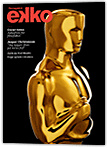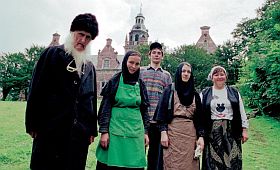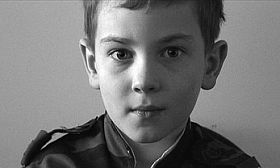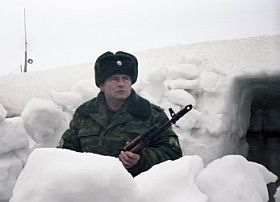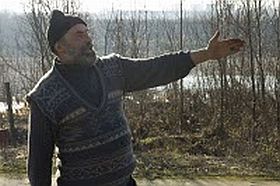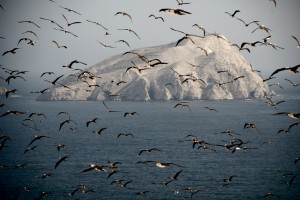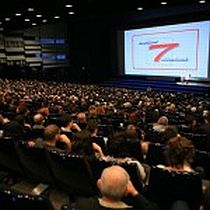Mikael Opstrup har overladt os denne mail til EKKOs redaktør Claus Christensen. Opstrup venter stadigvæk på svar. I mellemtiden har vi på Filmkommentaren valgt at bringe den som en slags åben mail:
Kære Claus. Da jeg i dag (11. februar) hørte om afskedigelsessagen mod Jesper Jack blev jeg ked af det, det er dumt og deprimerende hvis en filmkonsulent blander sit private brug af stoffer sammen med sit møde med ansøgere. Det er utilgiveligt og til stor skade for hele støttesystemet.
Så nu var det tid at få læst EKKO, som havde ligget ulæst i op til et døgn hjemme i stuen.
Så blev jeg endnu mere deprimeret.
Jo det er velskrevet og hvis det ikke var for den alvorlige baggrund, også morsomt.
Men hvor var det dog indsnævret og reaktionært. Det hviler på 2 helt afgørende præmisser:
– ’System A’ er et godt projekt, manden har talent
– Filmkonsulenter, redaktører, producere m.m. er en indspist masse, der er fuldstændig ligeglade med film og kvalitet.
Når man ser bort fra underholdningsværdien, kan artiklen ikke ses som andet end den underkendte uden-for-eliten’s møde med en indforstået elites arrogante nedladenhed. Folkets møde med parnasset. Vi sidder på magten og hvor er vi dog ligeglade med dem, der skaber kunsten. Det var som at læse Fremskridtspartiets partiprogram omsat til dagsaktuel reportage.
Det kan man jo heller ikke udelukke kan finde sted. Men nu kender jeg tilfældigvis de fleste af dem, som Fredensborg omtaler i artiklen. Og jeg kan ikke få det til at stemme. Er det niveauet, er det sådan beslutningerne tages? Har jeg helt misforstået de seneste par årtier?
Jeg kender begge positioner. Jeg har i mange år, som du ved, været producer og dermed ansøger på filminstituttet. Og jeg har været ansat på DFI i 4 år. Jeg kender begge sider af skrivebordet og det har været meget lærerigt. De sidste 2 år har jeg været hverken-eller. Jeg har med andre ord ikke noget i klemme.
En diskussion om støttesystemer og konsulenter er altafgørende vigtig, men denne artikel er vel det mest indsnævrede udgangspunkt, man kan forestille sig. For ét er den konkrete ageren af Jesper Jack, noget andet er artiklens indforståede kontekst, som er det der står tilbage, nu hvor der er indledt afskedigelsessag mod manden. Det synes jeg ikke skal stå uimodsagt. Jeg stiller gerne op. Kærlig hilsen Mikael.
SENERE:
Jeg har i dag 18. juni 2011 modtaget denne mail fra Claus Christensen med anmodning om, at den bliver bragt her på siden:
“Årsagen til, at jeg aldrig har besvaret Mikael Opstrups henvendelse, er den banale, at Ekkos server var nede i det døgn, hvor mailen blev sendt. Jeg har derfor aldrig modtaget mailen, men kan forsikre jer om, at Opstrups udmærkede indlæg ville være blevet bragt sammen med de mange andre kritiske indlæg, som Ekko fik tilsendt om konsulentsagen og straks bragte på hjemmesiden www.ekkofilm.dk. I Ekko er debatten fri, og der er højt til loftet, også når det er magasinet, som bliver kritiseret. Hvad Opstrups spørgsmål angår, vil jeg henvise til lederen i Ekko #53, hvor vi kommenterer debatten, takker for de mange indlæg og for vores del afrunder sagen.
Venlig hilsen
Claus Christensen, chefredaktør”
Mikael Opstrup skrev med det samme i dag, da Claus Christensen sendte ham og mig besked om, at han aldrig havde fået hans mail, sådan:
“Kære Claus
Tak for din mail. Da du jo udelukkende forholder dig til den redaktionelle indledning og ikke substansen i mit indlæg, har jeg sådan set ikke mere at tilføje. Andet end, at mailen ligger i min ’Sendt’ boks, afsendt d. 11.2.2011 kl. 20:02 til Claus Christensen. Bare til din information.
Venlig hilsen
Mikael Opstrup”
Og det er altså hvad Christensen svarer på og forklarer. Jamen, så er sagen jo opklaret. Jeg (ABN) kan kun konkludere, at nu kan Claus Christensen jo bringe Opstrups indlæg i Ekko og måske kommentere det. Men hvis han forståeligt vurderer, diskussionen om støttesystemer og konsulenter nu er forældet i Ekko, kan han af hensyn til Historien kommentere den her, og måske revitalisere den, så den kan flyttes til forsiden, hvad det principielle indhold i Opstrups tekst kunne indbyde til.
Jeg skrev dengang, at Filmkommentaren i ventetiden bragte Opstrups indlæg. Jeg tænkte ikke på, at Ekko ville droppe det, glemme det eller noget. Blot, at de nok havde meget travlt der på bladet. Nu ved jeg så, at de også havde maskinskade. Det hele er opklaret, og alt er i orden.



